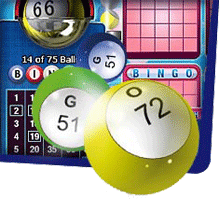|

Bingo, one of the most popular games of chance played at bingo halls as well as online bingo sites, is the descendent of the Italian National Lottery, which has been organized regularly in Italy ever since its unification in 1530. Today, the Italian Lotto contributes more than $75 million to the country’s budget, while modern bingo is a multi million dollar industry.
Early Forms
The ancient lotto games, which are believed to be ancestors of the modern bingo, were very popular among Europeans. The Germans, however, decided to convert lotto into an educational tool and use it to teach children spelling and math. A number of bingo-like educational names such as Animal Lotto, Spelling Lotto, and History Lotto were used to teach a wide range of subjects to school children in Germany.
Beano Becomes Bingo
Beano is one of the old forms of Bingo; in fact, it was the carnival game of Beano, which was played with a few dried beans and cards bearing numbers that gave birth to modern bingo. It was Edwin S. Lowe, a struggling businessman, who “discovered” the game in Dec 1929. He had just decided to stop at the carnival for some much-required relaxation when he noticed a huge crowd in the carnival. The group was playing a game called “Beano,” in which numbers were called out, and if players found those numbers on their cards, they placed a dry bean on that number. When a player covered all the numbers, he/she just shouted “Beano” and got a prize. The man conducting the game told Lowe that he had picked up the game at a carnival in Germany and launched it after making a few changes in its rules and name.
Realizing that Beano could rake in large profits if treated the right way, Lowe went back home to New York, purchased some dried beans, a numbering stamp, and cardboard. He quickly created a few cards and invited a group of friends for a game of Beano. The girl who won the game was so excited that she shouted Bingo instead of Beano, and that is how the most modern form of bingo was born.
Lowe’s Bingo
The earliest form of Lowe’s bingo comprised a set of 12 cards worth $1 and a set of 24 cards worth $2. The game became an instant hit and Lowe began making money. However, problems arose when a priest wanted to organize a game of bingo on a massive scale in order to raise funds for his church. The priest noted that the game of bingo as it was being sold simply did not have enough number combinations, as a result of which too many people won the game and had to be given prizes. The game, therefore, could not be conducted on a large scale for purposes such as fund raising.
Carl Leffler’s Contribution
When he listened to the priest’s problems, Lowe understood the fund-raising potential of bingo. He, therefore, hired Carl Leffler, a mathematics professor at Columbia University, to create 6000 differently numbered bingo cards. The professor agreed, but is reported to have gone mad after he finally accomplished the task.
Bingo Gets Popular
Once the fund-raising potential of bingo was understood, huge fund-raiser bingo games were organized by churches, charitable organizations, and individuals. Meanwhile, it also continued to be played for real money and for fun. The game became immensely popular all over the world in general and in the UK in particular. A large number of bingo halls began mushrooming all over UK, and with the advent of the Internet, a large number of online bingo sites were born.
- Play Your Favorite Game At Any Of This Best Bingo SitesPlay Bingo Games At
-
|


